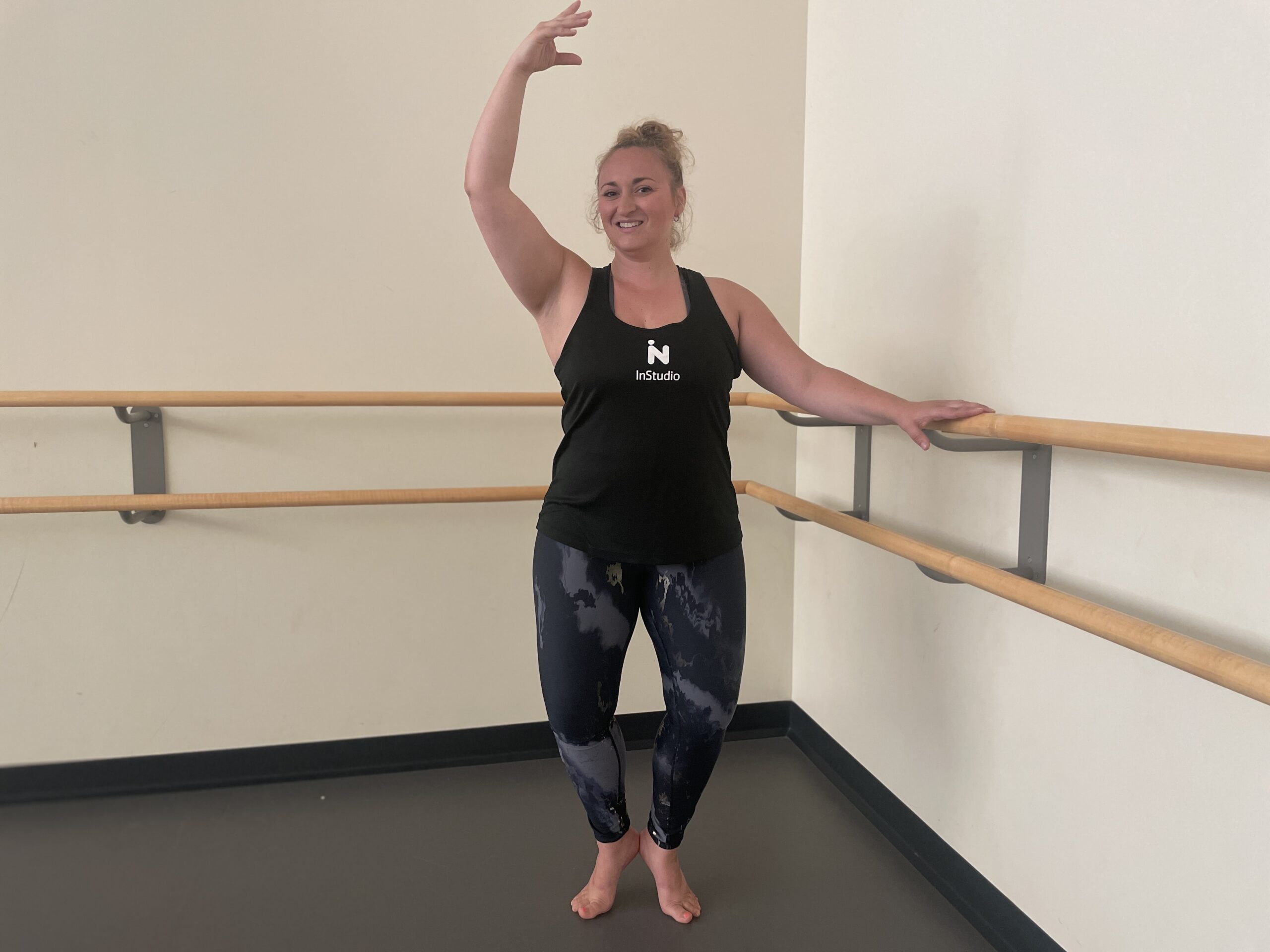For many gym-goers, their workouts involve lifting heavy weights, which works the deeper muscle tissue. But for this edition of Fit Minute, barre instructor at the Lynch/Van Otterloo YMCA Heather Saxe demonstrates a barre workout that involves working the top layers of muscle tissue.
Barre is a form of physical exercise that involves using the ballet barre, and derives its movements from ballet itself. In addition to barre, Saxe also teaches all other fitness classes at the Y except for spin, yoga, and Pilates, and also teaches multiple children’s movement classes.
The workout involves isometric movements, which Saxe says are “small movements for myofascial tissue strengthening.”
“A lot of people see a huge difference really quickly when they do their isometric movements versus strength training, because it does take a long time to build sometimes,” Saxe said.
The first exercise Saxe demonstrated involved starting in a wide stance with toes pointed outwards. She then said to bend your knees and hold that position.
“From here, you’re going to attempt to get a little lower if you can,” she said.
Then, you will make small up-and-down movements with your legs and body.
“It’s very, very tiny, and that’s where the isometric motion comes into play,” she said.
From there, Saxe says, you will remain in a low position, moving your knees back and then return them to the same position where they started, but never forward.
That exercise will increase strength in the inner and outer thigh and quads, and increase hip mobility.
Another way the exercise can be done is by putting your heels together and toes apart.
“You can lift your heels, walk them together, and squeeze your heels together. The more you squeeze your heels, the more tension you put on your legs. The more you squeeze, the more you work,” she said.
She says to go down about an inch and back up, but the lower you go, the better. When doing this, she says to keep in mind that shoulders need to stay over your hips in both exercises.
Saxe recommends doing three repetitions in sets of eight. In addition to working the thighs, quads, hips, and ankles, the exercise can also help with balance and engaging the core.
“This is a balance-based exercise,” she said. “If you can balance more, your core will be engaged full-time. In fact, barre is centered around your core.”

